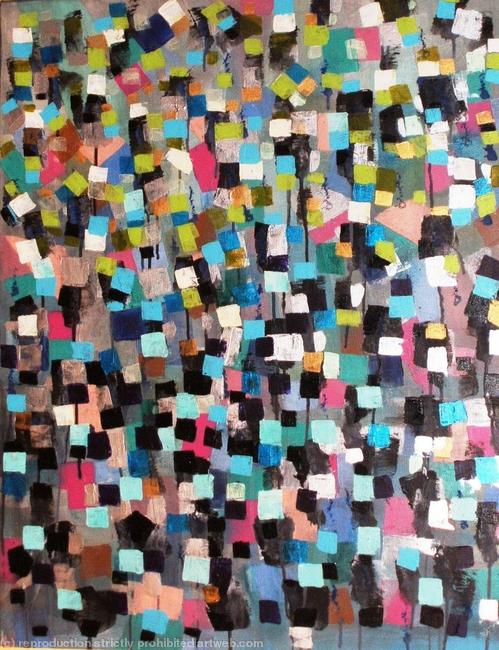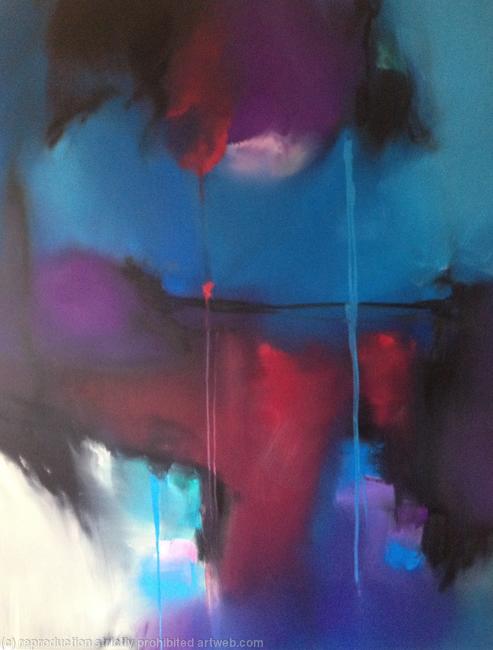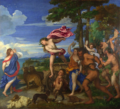
Brandishing a brush like a baton, the cliché of the expressionistic artist as composer, pretentious and serious, is worn out. It is an image that lends itself to modernism, to the turn of the 20th century, when the abstract became the voice of the artistic elite and the ‘my-five-year-old-could-have-done-that’ mentality became the voice of the opposition. This metaphor of counterparts, one slashing through the air in an orchestra pit, the other throwing paint in a studio, is one which is having a retroactive revival at the moment…
The National Gallery’s ‘Soundscapes’ exhibition – 6 paintings, 6 rooms, 6 composers, and 6 inspired sound pieces – presents itself as a master work of all that high art represents, the bringing together of the beautiful. The eyes and the ears work together to experience these famous pieces in a new way. The aim is to take them away from the realm of icon in which they have been sequestered, to sit with them, to reacquaint yourself with them and find your relation to them anew. The likes of Jamie xx, however, are unnecessary tools for understanding art sonically; the links have been there since the ancients named the muses.

Kandinsky’s compositions, referencing both painting and music, paved the way for a fresh perspective on the links between music and visual art. No longer were the muses separated. Wagnerian ideals of the total work of art fused sound and image, drama and setting in a way that brought everything together, into the same arena as it were; but these muses fought. The idea of coaxing a sound from an image from within the mind of the spectator became the concern of Kandinsky and it is something that many – artists and art viewers alike – sympathised with.
Jackson Pollock’s syncopated and rhythmic splatterings have been interpreted as his dance to jazz and ‘Boogie Woogie Broadway’ by Piet Mondrian actually references the music of New York when he was self-exiled in the 1940s.
The Jam opened their entire career – debut album, disk one, side one, track one – with the bold and brash statement that they were “the new art school” along with a very obvious live rendition of this song in front of a two-minute tripartite neo-expressionistic execution. This was an art school tradition which had inspired Pete Townsend to smash his guitars (via the teaching of Gustav Metzger at Ealing Art College) and which led Townsend to give a lecture in front of a then unknown Brian Eno on the use of tapes by non-musicians. Eno credits this lecture with inspiring him to transfer his artistic pursuits from the visual to the auditory.

Inspiration in the arts is equally shared amongst the art forms: heartbreak, love, life and death often crop up in both music and visual art. Tchaikovsky’s ‘The Seasons’ uses the perpetual spinning of the globe, month by month, to add structure to his orchestral suite. Likewise, Cy Twombly’s series in four parts weaves epic poetry, the influence of Tchaikovsky, classic mythology and the natural landscape to add layer upon layer to his immense artistic (and seasonal) undertaking. In both these works, image comes to sound and sound comes to image. The work of the artist, even a painter, is never two-dimensional. The ever-unfolding ‘This is England’ series has recently used the structure of the seasons to add artistic weight to its drug addled, adolescent narrative. The characters fall through 1990 over four weeks on prime time Channel 4. We laugh in week one but we know, beneath it all, that winter is well and truly coming.
Reversing the National Gallery’s plan of soundtracking paintings (and referencing our old friend Tchaikovsky), there are artists who paint sounds, who – like Pollock and Mondrian – translate the sonic into something altogether more spreadable, artists who absorb the layered beauty of music and relate it to canvas.

Both Leyla Murr and Wendy Hyde reference Tchaikovsky as an influence on their paintings. In the vein of countless artists and poets (Charles Bukowski, I am thinking of you!) scribbling to the sound of tinny classical compositions, these artists are continuing a timeless and indefinable tradition of transposing one wave into another, of one feeling into another and coming out with both – sound and image in one outcome.
The age-old metaphor of the artist/composer and the ultra-modern ‘Soundscapes’ exhibition are both working with completely misunderstood ideas: the true artist has always recognised the senses, and culture, in their totality.







